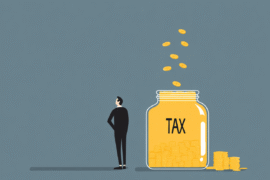This article may contain references to products or services from one or more of our advertisers or partners. We may receive compensation when you click on links to those products or services. Nonetheless, our opinions are our own.
The information presented in this article is accurate to the best of our knowledge at the time of publication. However, information is subject to change, and no guarantees are made about the continued accuracy or completeness of this content after its publication date.
Choosing which debts to pay off first can feel like navigating a confusing maze. Credit card debt often comes with high interest rates, while student loans typically involve extended repayment periods. Many individuals face uncertainty about where to allocate their income most effectively. Each type of debt carries unique challenges and long-term consequences. This provides a structured approach to prioritizing debt repayment strategies that align with long-term financial goals.
A Look at Credit Cards and Student Loans
Credit card debt and student loans differ significantly in structure and impact. Credit card balances accumulate rapidly due to high interest rates, especially when only minimum payments are made. Student loans usually offer lower interest rates and greater repayment flexibility. However, their extended repayment terms can feel burdensome.
Major differences include
- Credit Cards: Typically feature variable, high interest rates. Missed payments can lead to increased rates and lower credit scores.
- Student Loans: Usually have fixed, lower interest rates. Many offer income-driven repayment plans and options for deferment or forgiveness.
| Debt Type | Average Interest Rate | Repayment Flexibility |
|---|---|---|
| Credit Card | 15%–25% | Low |
| Student Loan | 3%–7% | High |
Understanding the nature of each debt helps form a repayment strategy suited to personal financial circumstances.
Why Interest Rates Matter for Your Choices
Interest rates play a critical role in debt repayment decisions. High-interest debts like credit cards can escalate quickly if left unpaid. While student loans often carry larger balances, they typically accumulate interest more slowly due to lower rates.
Consider the following factors:
- Interest Rate Comparison: Identify which debts are costing more in monthly interest.
- Payment Flexibility: Student loans often provide deferral or income-based repayment options.
- Financial Objectives: Prioritize debts based on short and long-term goals, such as reducing interest costs or improving credit scores.
| Debt Type | Interest Rate | Monthly Payment |
|---|---|---|
| Credit Card | 18% | $200 |
| Student Loan | 4% | $150 |
Evaluate these variables to make informed repayment decisions.
Creating a Debt Payment Plan That Works for You
Developing an effective repayment plan requires evaluating the cost and flexibility of each debt. Credit card balances usually carry higher interest rates, making them more expensive over time.
Recommended strategies include
- List Your Debts: Record balances, interest rates, and minimum payments.
- Prioritize High-Interest Debt: Allocate extra payments toward credit cards while maintaining minimum payments on student loans.
- Consider Forgiveness Programs: Eligibility for student loan forgiveness may affect repayment priorities.
| Debt Type | Total Amount | Interest Rate | Minimum Payment |
|---|---|---|---|
| Credit Card | $5,000 | 20% | $150 |
| Student Loan | $15,000 | 4% | $200 |
A personalized, flexible plan supports steady progress while managing total interest costs.
How Different Debt Types Increase Stress
Debt contributes significantly to mental and emotional strain. The unpredictable, high costs of credit card debt often cause stress due to fluctuating balances and seemingly ineffective minimum payments. In contrast, student loans generally offer consistent terms and clearer repayment expectations, which may reduce anxiety.
Stress-related factors include:
- Interest Rates: High rates accelerate debt growth and increase pressure.
- Payment Terms: Structured repayment plans can offer peace of mind.
- Impact on Lifestyle: Credit card debt may restrict discretionary spending more immediately than student loans.
Recognizing emotional responses to debt can support better prioritization and healthier financial habits.
Strategies for Paying Credit Card Debt Quickly and Easily
Repaying credit card debt effectively requires understanding balances and interest rates and maintaining discipline. The goal is to reduce high-interest liabilities swiftly to save money and decrease stress.
Common strategies include
- Avalanche Method: Pay off the highest-interest card first while making minimum payments on others.
- Snowball Method: Pay off the smallest balance first to build momentum.
- Balance Transfers: Transfer high-interest balances to lower-interest cards to reduce costs.
- Rigorous Budgeting: Allocate a fixed portion of income specifically for debt repayment.
| Card | Balance | Interest Rate | Minimum Payment | Strategy |
|---|---|---|---|---|
| Card A | $1,500 | 20% | $50 | Pay this off first |
| Card B | $900 | 15% | $30 | Next after Card A |
| Card C | $2,000 | 10% | $60 | Last to pay |
A structured approach helps accelerate repayment and improve financial flexibility.
When to Manage Both Types of Debt
In many cases, managing both credit card and student loan debt simultaneously is the most practical strategy. Focus on high-interest credit card debt while maintaining regular student loan payments to avoid penalties or additional interest.
Integrated strategies include:
- Debt Snowball Method: Tackle the smallest debt first for psychological wins.
- Debt Avalanche Method: Focus on the highest-interest debt to minimize total costs.
- Consolidation Options: Consider consolidating student loans or transferring credit card balances to reduce interest rates.
| Debt Type | Interest Rate | Minimum Payment Flexibility |
|---|---|---|
| Credit Cards | High (15–25%) | Varies by card |
| Student Loans | Moderate (4–8%) | Fixed (with hardship options) |
Balancing repayment efforts supports short-term relief and long-term financial stability.
How to Decide Which Credit Card to Prioritize
When managing multiple credit cards, identify the one with the highest interest rate. Focus additional payments on that card while maintaining minimum payments on the rest. This method reduces total interest paid and accelerates progress toward becoming debt-free.
Voted "Best Overall Budgeting App" by Forbes and WSJ
Monarch Money helps you budget, track spending, set goals, and plan your financial future—all in one app.
Get 50% OFF your first year with code MONARCHVIP
Final Thoughts
Whether to pay off credit card or student loan debt first depends on interest rates, repayment flexibility, emotional impact, and long-term goals. Credit cards often require immediate attention due to higher interest, while student loans can be managed through structured plans and potential forgiveness. A personalized, consistent approach that addresses both financial and emotional considerations can lead to clarity and peace of mind. With discipline and ongoing adjustments, financial stability is within reach.
Frequently Asked Questions
Why should credit card debt take priority over student loans?
Credit card debt typically carries higher interest rates, which causes it to grow faster and cost more over time. Prioritizing it saves money and may improve your credit utilization ratio, boosting your credit score.
What are the advantages of addressing student loans first?
Student loans often have more flexible repayment terms, such as income-driven plans and forgiveness programs. If these benefits match your circumstances, prioritizing them may reduce monthly financial strain.
How do personal financial goals influence debt repayment decisions?
Goals like improving credit, purchasing a home, or building savings can affect which debts to tackle first. Short-term goals may favor reducing credit card debt, while long-term goals may benefit from stable student loan management.
What strategies work well for managing both types of debt?
Using the debt avalanche or snowball method, combined with a structured budget, can help manage both debts. The right strategy depends on whether saving on interest or maintaining motivation is more important.

Reviewed and edited by Albert Fang.
See a typo or want to suggest an edit/revision to the content? Use the contact us form to provide feedback.
At FangWallet, we value editorial integrity and open collaboration in curating quality content for readers to enjoy. Much appreciated for the assist.
Did you like our article and find it insightful? We encourage sharing the article link with family and friends to benefit as well - better yet, sharing on social media. Thank you for the support! 🍉
Article Title: How a College Tax Could Change Tuition and Aid
https://fangwallet.com/2025/06/17/college-tax/The FangWallet Promise
FangWallet is an editorially independent resource - founded on breaking down challenging financial concepts for anyone to understand since 2014. While we adhere to editorial integrity, note that this post may contain references to products from our partners.
The FangWallet promise is always to have your best interest in mind and be transparent and honest about the financial picture.
Become an Insider

Subscribe to get a free daily budget planner printable to help get your money on track!
Make passive money the right way. No spam.
Editorial Disclaimer: The editorial content on this page is not provided by any of the companies mentioned. The opinions expressed here are the author's alone.
The content of this website is for informational purposes only and does not represent investment advice, or an offer or solicitation to buy or sell any security, investment, or product. Investors are encouraged to do their own due diligence, and, if necessary, consult professional advising before making any investment decisions. Investing involves a high degree of risk, and financial losses may occur including the potential loss of principal.
Source Citation References:
+ Inspo
There are no additional citations or references to note for this article at this time.












































